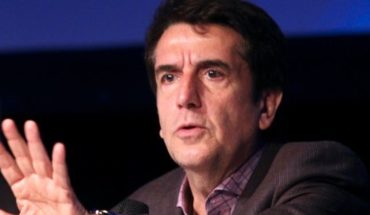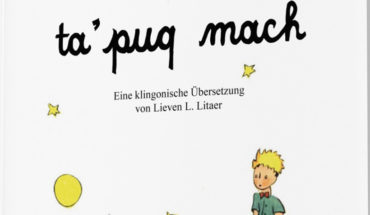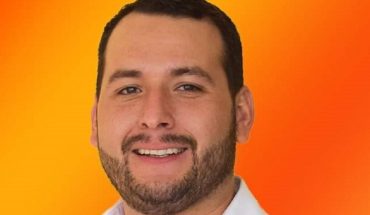Exnegotiators of the Revolutionary Armed Forces of Colombia (FARC) announced that they would retake their arms after two years of a peace process in which they argue that the government has not guaranteed their safety. Below is a timeline of important moments of tensions and peace-finding between FARC rebels and the Colombian government:
— May 1964: Rebel leader Manuel Marulanda Vélez, aka “Tirofijo”, founds the Revolutionary Armed Forces of Colombia, known as FARC. HELP US Click the Google News star and follow us—August 7, 1982: President Belisario Betancur’s government begins a peace process with the FARC.—June 1987: Although the ceasefire between the government and the FARC was virtually unrespected was virtually unrespected , a rebel attack that kills 25 military personnel in the south of the country virtually nullifies the peace process.— April 1991: The FARC and the guerrillas of the National Liberation Army (ELN) and the People’s Liberation Army (PLA), gathered in the so-called Guerrilla Coordinator Simon Bolivar, sit down to negotiate with delegates from The government of César Gaviria in Caracas, Venezuela. The dialogues moved to Tlaxcala, Mexico, in 1992 because of political instability in Venezuela, which suffered a coup in February of that year.—October 1992: Negotiations end without reaching an agreement.—August 1998: President Andrés Pastrana announces the start of a new peace process with the FARC. A Swiss-controlled demilitarized zone is established in the south of the country, where the talks will be held.— February 20, 2002: Rebels hijack a plane and take Senator Jorge Eduardo Gechem, a member of the Peace Commission, hostage. Pastrana breaks the negotiations and orders the immediate re-entry of security forces to the 42,000-square-kilometer demilitarized zone.—December 2004: Colombian undercover agents capture Rodrigo Granda, considered “the chancellor of the FARC” , in Caracas and transferred to Colombia.— August 16, 2007: Venezuela’s President Hugo Chavez offers to mediate between the rebels and Colombia’s President Alvaro Uribe. Peace efforts fail months later.—March 26, 2008: FARC’s first leader, Manuel Marulanda “Tirofijo,” dies of natural causes after more than four decades fighting the government.—September 22, 2010: Number Two and Strategy Manager “Tirofijo” dies of natural causes after more than four decades fighting the government.—September 22, 2010: Number Two and Strategy Manager FARC military man, Jorge Briceño, aka “Mono Jojoy”, is killed in an airstrike.—November 4, 2011: Top rebel commander Guillermo Sáenz, also known as Alfonso Cano, dies in an army attack.—February 26, 2012: The FARC resigns kidnapping and extortion and freeall captive military officers.—August 12, 2012: President Juan Manuel Santos announces new peace talks with the rebels. The process begins two months later in Oslo, Norway, and later moved to Havana.—August 24, 2016: The government of Juan Manuel Santos and the FARC announce a peace agreement.—September 26, 2016: President Juan Manuel Santos and FARC commanders and FARC commanders formally sign the agreement.—October 2, 2016: Colombians vote in a plebiscite against the peace agreement. Many consider it very favorable for the rebels.—November 24, 2016: President Juan Manuel Santos and the FARC sign a revised peace agreement. A UN mission is appointed to oversee the disarmament and reintegration of the ex-rebels into society.—July 2017: Visiting Colombia, Pope Francis calls for reconciliation and asks the victims of the war to forgive.—27 August 2017 : The FARC begins the process to become a political party.—November 2017: Former rebel leader Rodrigo Londoño, alias “Timochenko”, is nominated as a presidential candidate.—March 2017: The special court to document abuses takes office. during five decades of armed conflict.—April 9, 2017: Former FARC leader Seuxis Hernandez, known as “Jesus Santrich,” is arrested for drug trafficking. Detention tenses relations between the ex-rebels and the government.—July 2018: Former FARC guerrilla leaders appear for past crimes committed before the special court of peace created as part of the agreements with the government two years ago.—2 of August 2018: The Center for Historical Memory says that Colombia’s internal armed conflict for more than half a century left some 262,000 dead.—August 31, 2018: The government says former FARC leader Luciano Marín, aka “Iván Márquez,” disappeared. .—October 2018: Jean Arnault, head of the UN mission to verify the implementation of the agreements in Colombia, says that the lack of economic integration of former FARC members and the killings of social leaders in the South American nation are the main concerns about the peace process.—May 2019: Supreme Court orders the release of former commander Seuxis Paucias Hernández, alias “Jesús Santrich”. Weeks later he disappears from public view and his whereabouts have since been unknown.—July 3, 2019: UN Secretary-General Antonio Guterres calls on the government to respect agreements with the ex-rebel slab and says that the UN mission in Colombia has verified the murder of 123 ex-combatants since the peace agreement was signed.—29 August 2019: Former FARC guerrilla chief negotiator Luciano Marín, alias “Ivan Marquez”, announces that a group of ex-rebels decided to retake their arms after considering that the Colombian government failed to guarantee its rights.





